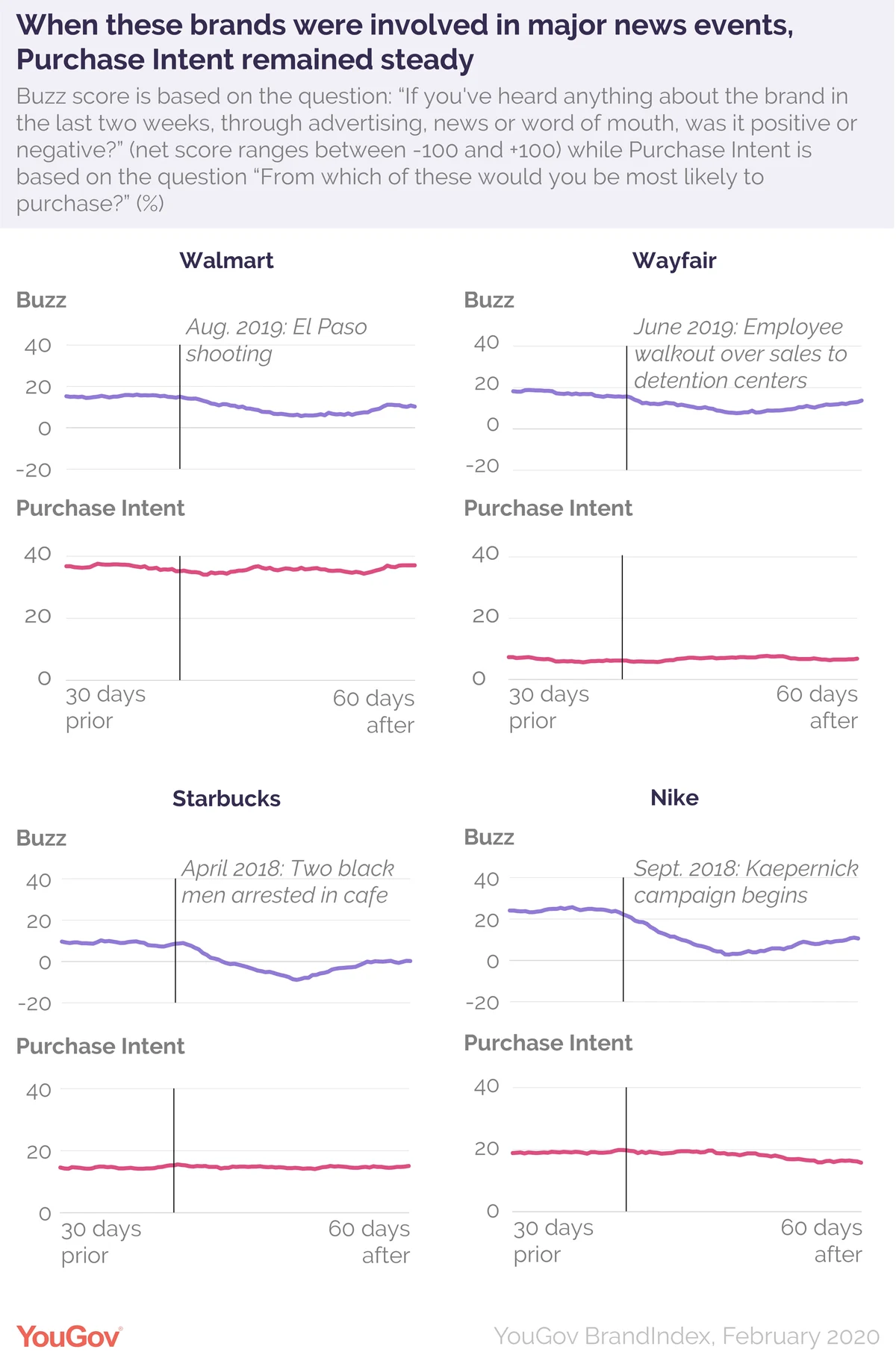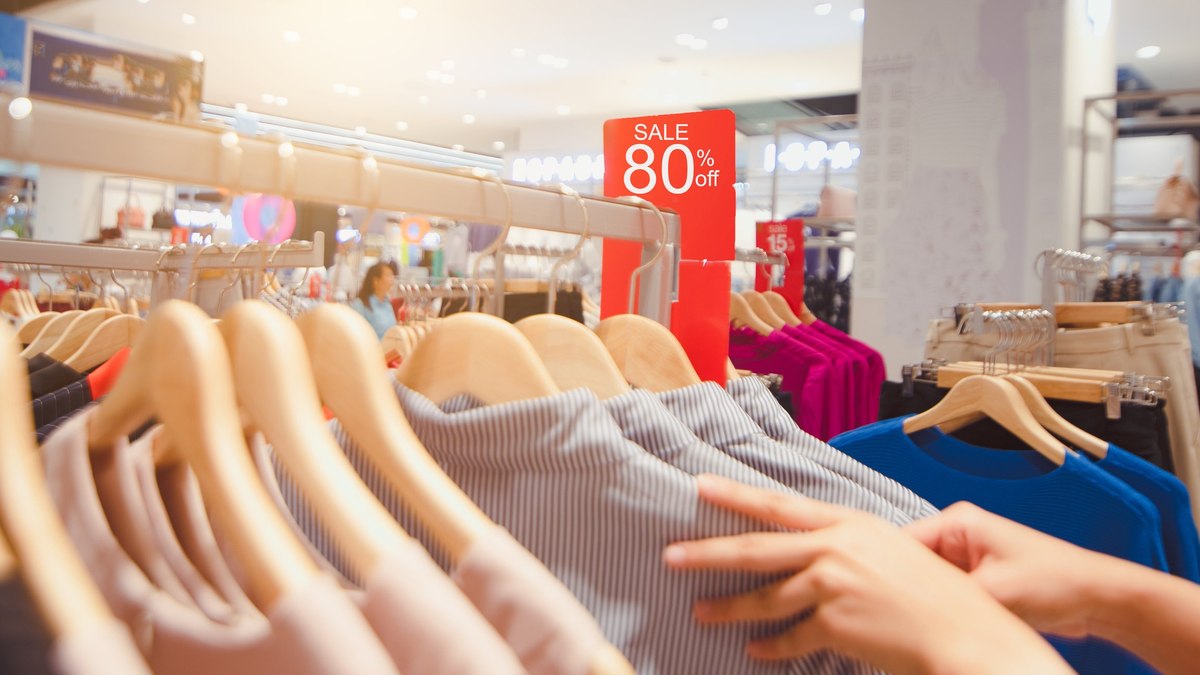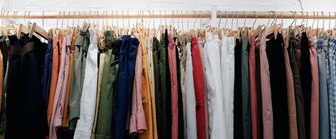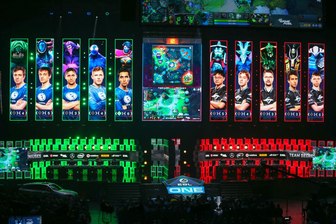In an era of hyper partisanship and cultural division, brands entangled in politically charged news events often find themselves the subject of vicious boycott threats, critical hashtags and dramatic viral posts.
Throughout these events, chatter around the affected brands generally soars, but do these bouts of online fury really change how consumers act in the real world? Are consumers putting their money where their hashtags are?
YouGov BrandIndex tracks such chatter in the form of its Buzz score, which is a net measure of whether Ameriancs have heard something positive or negative about a brand. If there’s more negative than positive chatter around a brand, the Buzz score declines.
In an analysis for Bloomberg of several brands that faced backlash over the last few years, YouGov data shows while Buzz scores slid and rebounded, Purchase Intent -- a measure how likely Americans will buy from a brand -- remained consistent.

After two black men were arrested in a Philadelphia Starbucks in April 2018, a boycott campaign quickly spread across social media platforms. The chain closed thousands of locations for an afternoon for racial-bias training for its staff, in an attempt to quell concerns. The percentage of Ameicans intending to spend money at Starbucks didn’t budge from 15 percent. Meanwhile, Starbucks shares hit an all-time high around that time.
America’s largest bricks-and-mortar retailer Walmart faced backlash for the time it took to amend ammunition sales policies following the August 2019 El Paso shooting. In the two months following, Purchase Intent rose two points to 37 percent.
Nike made one of its most political marketing moves ever when it launched a campaign in September 2018 starring Colin Kaepernick, the former pro NFLer who’s credited for starting the practice of kneeling during the pre-game national anthem. The move enraged and divided Nike customers and online response included videos of fans burning Nike sneakers in protest. In this case, Purchase intent for the brand did decrease among US adults by four percentage points to 15 percent.
Online furniture giant Wayfair faced public acrimony from its own employees after it was revealed in June 2019 the company was providing furniture to migrant detention centers. The percentage of Americans who intended to buy from the website jumped by nine percent in the 60 days after the news broke.
Social media -- and the constant beat of outrage it can bring -- often doesn’t reflect the real lives of Americans.
Methodology: YouGov asks panelists about thousands of brands everyday. Purchase intent and Buzz is based on a 90-day average weighted sample size of 2,487 for Nike, 2,226 for Walmart, 2,648 for Starbucks and 1,620 for Wayfair. Data was retrieved October 2019.











